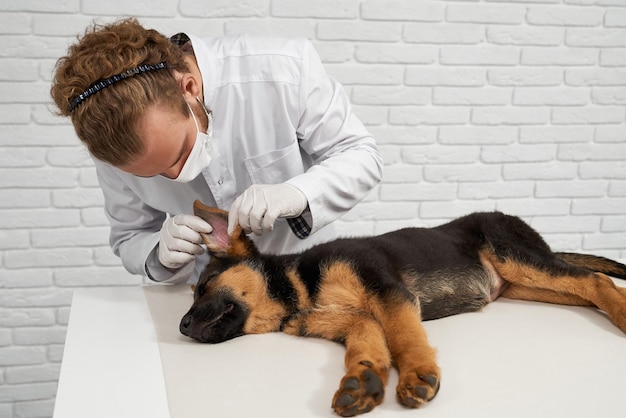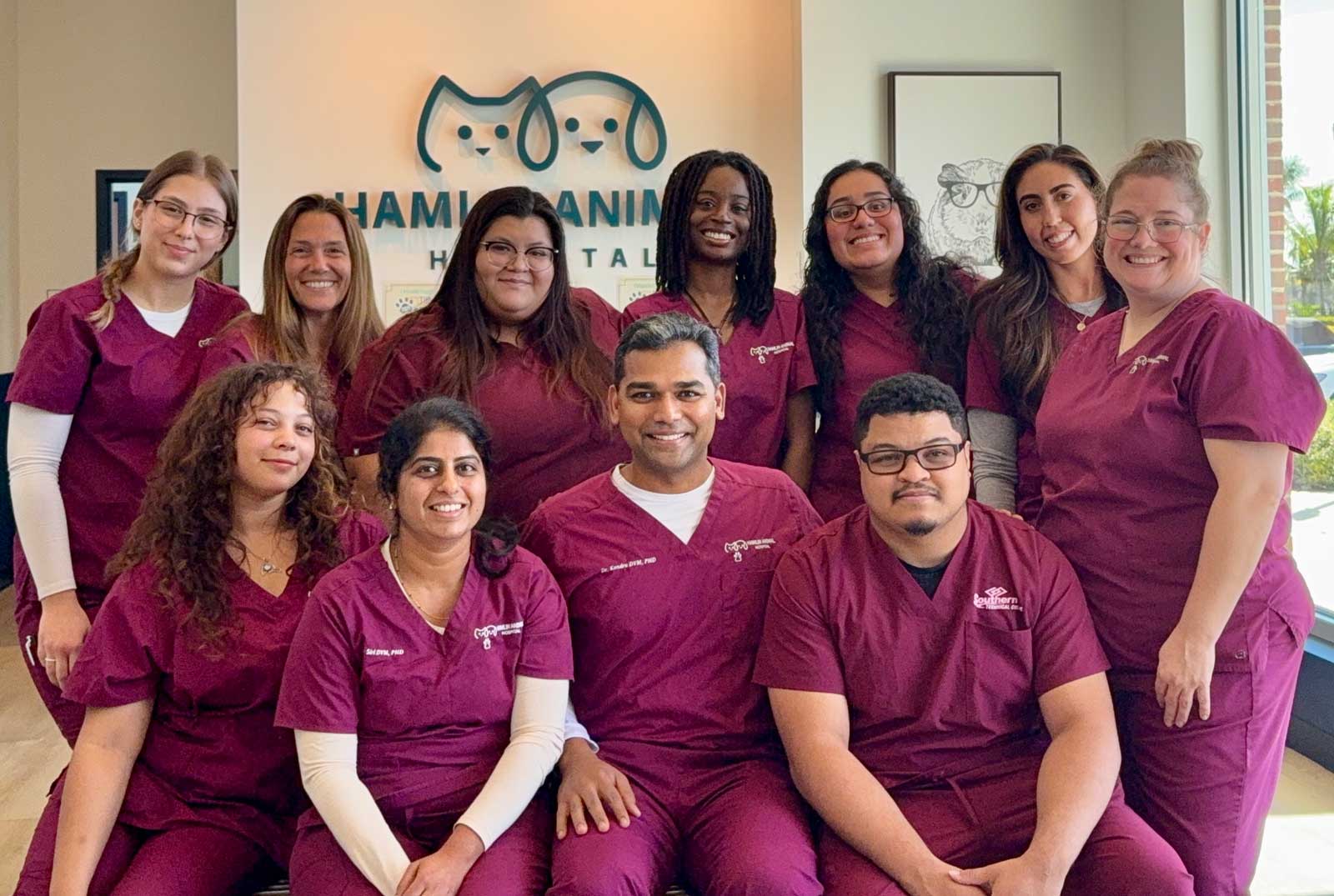Is Your Pet Limping? Causes and When to See a Vet


Is Your Pet Limping? Causes and When to See a Vet
If you’ve noticed your dog or cat limping recently, you’re not alone—many pets experience sudden lameness or changes in their gait at some point in their lives. As a pet owner in Winter Garden and the surrounding communities, you want the best for your furry family member, and any sign of discomfort or pain can be concerning. At Hamlin Animal Hospital, our team understands how stressful it can be to watch a beloved pet struggle to move or play as usual. Limping is often a sign that something isn’t quite right, and the reasons behind it can range from minor injuries to more serious health concerns.
In this blog, we’ll guide you through the most common pet limping causes, how to recognize when limping is a sign of a bigger problem, and what you can do to help your pet recover. We’ll also discuss when to see a vet for limping and why prompt veterinary care is so important for a pet’s long-term health. As your local veterinary clinic in Winter Garden, FL, we’re here to support you through every stage of your pet’s health journey. If you’re searching for a “vet near me” who can provide thorough orthopedic evaluations and treatment, you’ve come to the right place. Remember, scheduling an appointment for a comprehensive pet exam is always a good first step when you notice changes in your pet’s mobility or behavior.
How to Recognize Limping and Signs of Lameness in Pets
Limping, also called lameness, refers to any abnormality in the way your pet walks or moves. It can develop suddenly or progress more gradually over time. Recognizing the problem early can make a big difference in your pet’s comfort and recovery. Some owners first notice a limp when their dog hesitates to jump into the car, or when a cat starts avoiding stairs or high perches.
Key symptoms of limping include a noticeable change in the way your pet walks, such as favoring one leg, holding a limb off the ground, or displaying stiffness after resting. Other signs to watch for are vocalizing when moving, licking or chewing at a particular paw or joint, swelling around a limb, or a reluctance to play or exercise. In some cases, pets may also show behavioral changes like irritability or withdrawal, which can indicate pain.
Pets can sometimes limp more at certain times of day, such as after vigorous play or first thing in the morning. If you notice your pet struggling after a walk in the humid Florida weather, or if they seem more uncomfortable during our rainy season, these can be important details to share with your veterinarian. Early recognition and documentation of these symptoms help our veterinary team pinpoint the underlying cause during your visit.
What Causes Pets to Limp? Exploring Pet Limping Causes in Winter Garden
A wide variety of factors can lead to limping in dogs and cats. Some causes are minor and resolve quickly, while others may require more advanced care. In our local area, common pet limping causes include soft tissue injuries such as strains, sprains, or bruising, which may happen during playtime at home or while exploring the outdoors. Pets can also develop limping due to foreign objects like thorns or burrs, which are common in grassy yards and parks around Winter Garden.
Other frequent culprits are nail injuries, cuts or wounds on the paw pads, or insect bites. In larger breeds or older pets, conditions like arthritis, hip dysplasia, or ligament injuries are also common reasons for lameness. Sudden, severe limping may be the result of fractures or dislocations, especially after a jump from a high surface or a car accident. Sometimes the cause is less obvious, such as infections, bone diseases, or even certain types of cancer.
In cats, limping can sometimes be caused by “cat fights” leading to abscesses or soft tissue swelling, while in small dogs, jumping off furniture can result in ligament injuries. Our warm climate can contribute to the risk of insect stings, which may cause sudden paw pain. Understanding the wide range of pet limping causes in Winter Garden helps pet owners remain vigilant and seek care sooner rather than later.
If you suspect a more serious injury, our orthopedic care services provide advanced diagnostics and treatment for lameness, fractures, and dislocations, helping pets return to their active lifestyles as quickly as possible.
Chronic Versus Acute Limping
It’s helpful to distinguish between acute limping, which appears suddenly and may be linked to a specific incident, and chronic limping, which develops slowly over time. Acute limping is often related to trauma or injury, while chronic limping can signal underlying conditions such as arthritis or degenerative joint disease. Sharing the history and duration of your pet’s limp with our veterinary professionals is an important part of the diagnostic process.
Treatment and Management: What to Expect from a Veterinarian Near Me
When your pet arrives for an evaluation at Hamlin Animal Hospital, our veterinary team begins with a thorough physical examination and review of your pet’s history. We may recommend diagnostic imaging, such as digital radiology or ultrasounds, to assess bones, joints, and soft tissues. In some cases, laboratory testing or an electrocardiogram may be necessary to rule out systemic conditions.
Treatment for limping depends on the underlying cause. For minor injuries, rest, cold compresses, and pain management may be sufficient. In more complex cases, such as fractures or ligament tears, surgical intervention may be required. Our clinic provides a full range of services, from fracture and dislocation care to advanced orthopedic surgery and rehabilitation.
Other treatment approaches involve wound cleaning for cuts or abscesses, anti-inflammatory medications for arthritis, or antibiotics for infections. For pets with chronic joint conditions, our veterinarians may recommend weight management strategies, physical therapy, and ongoing monitoring to help maintain mobility and comfort. In some cases, we may suggest internal surgery to address deeper issues, always with a focus on your pet’s safety and well-being.
Our approach is always tailored to your individual pet, taking into account their age, breed, activity level, and lifestyle. For pet owners looking for “quality veterinary services near me,” our comprehensive care ensures that every aspect of your pet’s health is addressed under one roof.
At-Home Care and Prevention for Pet Limping in Winter Garden
While professional veterinary care is essential for diagnosing and treating limping, there are steps you can take at home to support your pet’s recovery and help prevent future injuries. Limiting vigorous activity and encouraging rest is key when you notice signs of lameness. Avoid long walks or play sessions until your pet is cleared by your veterinarian.
Inspect your pet’s paws and limbs regularly, especially after outdoor adventures in the diverse landscapes of Winter Garden. Check for thorns, burrs, insect bites, or signs of irritation. Maintaining a healthy weight reduces stress on joints, especially for older dogs and cats prone to arthritis. Providing non-slip surfaces indoors and ramps for pets who struggle with stairs can also minimize the risk of falls and strains.
Additionally, keeping up with routine wellness exams allows our veterinary team to detect early signs of joint disease, nail problems, or musculoskeletal issues before they become severe. Preventive care, including comprehensive pet exams, is a vital part of ensuring your pet’s long-term mobility and happiness.
When to See a Vet for Limping: Recognizing the Signs That Require Immediate Attention
While some causes of limping may be minor, others require prompt veterinary intervention. You should schedule an appointment with our team if your pet’s limp lasts more than 24 hours, worsens over time, or is accompanied by swelling, severe pain, or changes in behavior. Sudden inability to bear weight, visible wounds, or suspected fractures are urgent reasons to seek help.
Other warning signs include persistent licking or chewing at a limb, refusal to eat or drink, or any evidence of infection such as pus or foul odor. If your pet is experiencing repeated limping episodes or you notice signs of discomfort after outdoor play, it’s always safer to err on the side of caution and have them evaluated by our veterinary professionals.
Our veterinary clinic in Winter Garden, FL is equipped to handle urgent concerns, from orthopedic injuries to more subtle causes of lameness. If you’re searching for a “veterinarian near me” who can provide timely, compassionate care, Hamlin Animal Hospital is ready to help. For more details on our advanced orthopedic treatments and what to expect during your visit, explore our orthopedic care services.
Supporting Your Pet’s Mobility and Comfort: Next Steps for Concerned Pet Owners
A limping pet is always a concern, but with attentive care and professional support, most pets can recover and return to their favorite activities. Monitoring your pet closely, seeking prompt veterinary attention when needed, and maintaining regular wellness checks are essential steps to keeping your companion healthy and active. Our veterinary professionals are dedicated to providing comprehensive pet care in Winter Garden and surrounding communities, ensuring that every pet receives individualized attention and a treatment plan that fits their unique needs.
If you’ve noticed any changes in your pet’s movement or comfort, don’t wait to get the answers you need. Scheduling an appointment for a comprehensive pet exam is the best way to ensure your pet’s health and catch potential issues early. Whether you’re concerned about pet limping causes, looking for “vet near me” care, or simply want to keep your pet’s joints in top shape, our team at Hamlin Animal Hospital is just a call away.
Contact us today at (407) 872-7772 or visit our clinic at 14410 Shoreside Way, Suite 130, Winter Garden, FL 34787 to schedule your pet’s evaluation. We look forward to helping your pet move comfortably again and supporting your family with the best veterinary services in Winter Garden.
This blog is intended for informational purposes and should not replace professional veterinary advice. If your pet is experiencing sudden or severe symptoms, always seek immediate veterinary care.




















